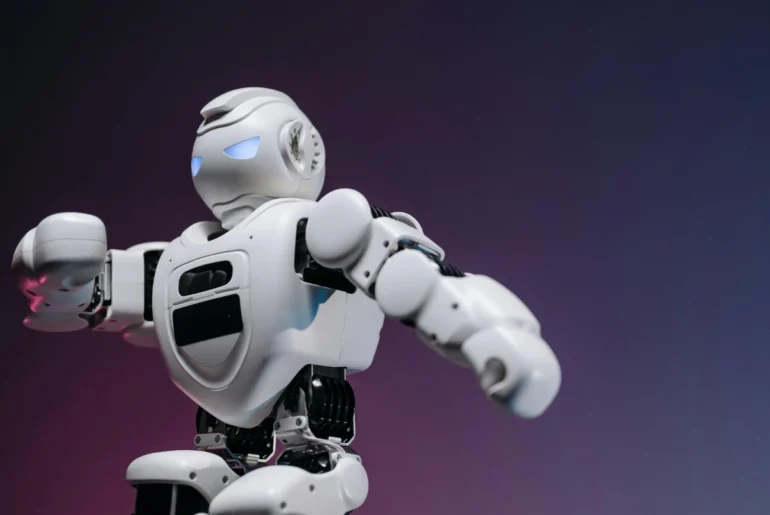In the fast-paced world of artificial intelligence, one of the most critical challenges researchers and developers face is the problem of memory limitations in artificial intelligence error systems. Such limitations can significantly affect AI models’ performance, efficiency, and scalability, especially as they grow in complexity and data intensity.
Whether handling vast amounts of unstructured data, making real-time decisions, or enhancing the precision of machine learning algorithms, memory bottlenecks are a significant barrier to attaining peak AI performance. Understanding the root cause of memory limitation and developing innovative solutions are key steps forward in advancing AI technology to meet the demands of increasingly diverse industries.
8 Efficient Memory Management Techniques for AI Models
Understanding Memory Bottlenecks in AI Systems
Memory limitations in artificial intelligence errors often arise when AI models demand more memory than the system can provide. Currently, AI algorithms, especially on deep learning models, are much more extensive in size and complexity, so more memory space is required to contain and hold the data, the weight, and the intermediaries for the computation results during computation.
Lack of this resource can often lead to even total failures of the computations involving AI tasks. Errors primarily manifest when dealing with vast datasets, which involve real-time processing or are scaled for deployment in the resource-constrained environment that ranges from the mobile device to the edge computing system.
Memory constraints in artificial intelligence. Memory constraints are one way of improving the performance and scaling of AI systems. Optimizing memory, compressing the models, and efficiently handling data can curb most of these issues. Other innovations that support solving memory bottlenecks come in the form of leveraging particular hardware (e.g., using GPUs or TPUs) or using distributed computing.
Understanding what is causing this lack of memory and what one can do to prevent its occurrence would ensure the successful utilization of AI models under tightly constrained memory.
How Memory Constraints Impact AI Performance
Memory limitations in artificial intelligence error can significantly affect the performance of AI because they create bottlenecks that slow computation and hinder model efficiency. When AI systems run out of memory or cannot access required data speedily, it may lead to delays in training, inaccurate predictions, or even system crashes.
These constraints become most problematic in resource-intensive applications like deep learning or real-time decision-making, where large data sets and complex models consume significant amounts of memory. Therefore, understanding and managing these limitations is crucial to ensure AI systems work smoothly and deliver optimum results.
Memory Errors in AI: Causes and Solutions
Usually, memory limitations in artificial intelligence errors occur because the system cannot provide enough memory for large datasets or complex models. Memory requirements increase as AI scales, especially in deep learning, with significant memory to store weights, intermediate computations, and data.
Memory errors can develop when this occurs, leading to slower performance or crashing. Solutions to these memory problems include model optimization techniques that include pruning or quantization and using more power-efficient hardware such as GPUs or distributed computing. Addressing some of these causes can alleviate memory errors and make AI systems more stable and efficient.
Optimizing Memory Usage in AI Algorithms
Memory limitations in artificial intelligence error occur mainly when algorithms demand more memory than the available system and hence do inefficient processing, even to the point of a system crash. With the complexity of AI models, including deep learning networks, such networks need bigger memory pools to accommodate larger datasets and intermediate results of these calculations.
Thus, it leads to much worse performance for the entire AI system and could delay execution or simply halt it. These issues must be addressed by optimizing memory usage so the AI algorithm functions smoothly and executes faster.
Optimizing memory usage in AI algorithms involves several techniques, such as model compression, pruning, and more efficient data structures. It reduces the number of parameters or compresses the data while maintaining model accuracy.
Hardware acceleration, such as the application of GPUs or specialized AI chips, can be used to avoid some memory constraints. Those strategies help with memory error reduction and increase scalability and efficiency, enabling an AI system to solve complex tasks without experiencing memory bounds.
The Role of Memory in AI Model Efficiency
Memory limitations in artificial intelligence error play the most crucial role in determining the efficiency of AI models. As the model size and complexity grow, there is a pronounced rise in memory needed to store data, parameters, and intermediate calculations.
Insufficient memory can lead to slow processing time, crashes, or poor performance in the AI system. This implies memory constraint conditions can limit the ability of an AI model to scale in appropriate proportions, which can become cumbersome if dealing with large datasets or for real-time tasks. Optimizing AI model efficiency can only be achieved by first understanding and addressing these limitations concerning memories.
Improving AI model performance by minimizing memory use when necessary is particularly important during deep learning and other computationally expensive algorithms. Memory-saving techniques can be employed via model pruning, quantization, and memory-efficient data structures. Specialized hardware – like GPUs or distributed computing – can provide additional resources for memory-intensive tasks. These approaches enable better overall functionality of AI systems in terms of scaling effectively and minimizing errors due to lack of memory.
AI Memory Limitations: Challenges and Workarounds
One of the critical problems arising from memory limitations in artificial intelligence error is that increasingly complex AI systems are pushing beyond memory availability. This leads to crashes, reduced performance, or failure to process large datasets within the memory requirements. Errors mainly arise in deep learning models, where there is an enormous inflow of data and the associated computations put a lot of strain on the system’s memory, consequently decreasing efficiency and accuracy.
To break through these barriers, developers resort to workarounds such as pruning models, compression of models, and using specialist hardware like GPUs. Hence, AI models are scaled efficiently by optimizing memory usage and distributing workloads across multiple systems with minimal error. These help ensure performance is maintained well in memory-constrained environments for smooth operations in AI.
Minimizing Memory Overhead in Artificial Intelligence
Memory overhead minimization is the way to address memory limitations in artificial intelligence errors. When AI models consume too much memory, they may cause the system to slow down or even crash during complex computations or handling large datasets.
Reducing memory overhead involves techniques such as model pruning, weight sharing, and quantization that help streamline memory usage without sacrificing model performance. By maximizing memory consumption, AI systems can run more optimally, scale better, and avoid costly errors from exceeding system limits.
Scaling AI Systems Beyond Memory Constraints
Scaling AI systems beyond memory limitations in artificial intelligence error demands novel strategies for optimizing memory use and avoiding system failure. Techniques like model compression, distributed computing, and utilization of specialized hardware, such as GPUs, can better handle large datasets and complex computations. AI systems scale effectively with minimal performance bottlenecks and errors by solving these memory-related constraints.
Conclusion
Memory limitations in artificial intelligence error are critical and can significantly impede the performance and scalability of AI systems. As artificial intelligence models become more sophisticated and data-intensive, their memory constraints can lead to slower processing, system crashes, and reduced accuracy; however, by implementing different strategies such as memory optimization, model compression, or leveraging specialized hardware, all these errors can be managed. Addressing memory limitation is also crucial in ensuring the AI system is efficient, scalable, and reliable enough, which sets the benchmark on what will be achievable through AI for several real applications.





